Adventures in Glove Making (or how not to reproduce Elizabethan gloves)
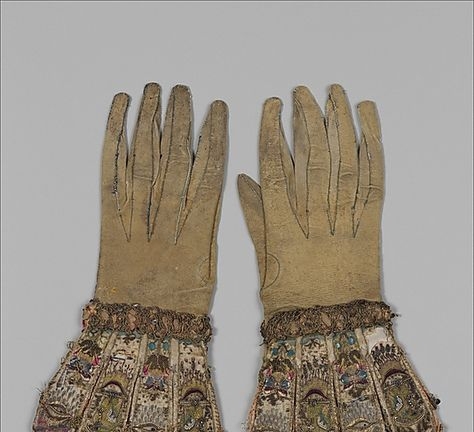
by Thena (T.E.) MacArthur, First published for the March/April 2013
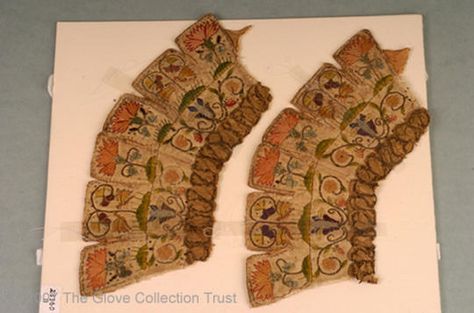
I say that title with tongue firmly in cheek. Reproducing a pair of Elizabethan gauntlet gloves was rather fun, enlightening, and yes … satisfying, if for no other reason than I discovered quite a bit about my own levels of frustration and what I’ll need to do to avoid that next time. But I digress.
To reproduce the gloves I started with a lovely piece of linen, several period colors of silk floss, a new canvas stretcher, and plenty of research on the internet. I don’t have enough room to go into the history here, but the basic information on these gloves is that they become popular during the late reign of Elizabeth I and stayed a fad into the 17th Century. This can be borne out by the example of such a glove in Seventeenth-Century Women’s Dress Patterns (Book One) by Susan North and Jenny Tiramani – you know, the cool book with directions, photographs, and x-rays of extent garments. Contained in this book are the patterns for two styles of gloves, 1600 – 1636. Of course, I decided to go with the most difficult style because, well, I can occasionally perform amazing stupid human tricks and really believe it won’t be “that hard.” In a moment of actual intelligence, I chose instead to use a Simple pattern, once taught by Thistle Threads, and to embellish from there based on more research. I didn’t stray too far for this first pair.
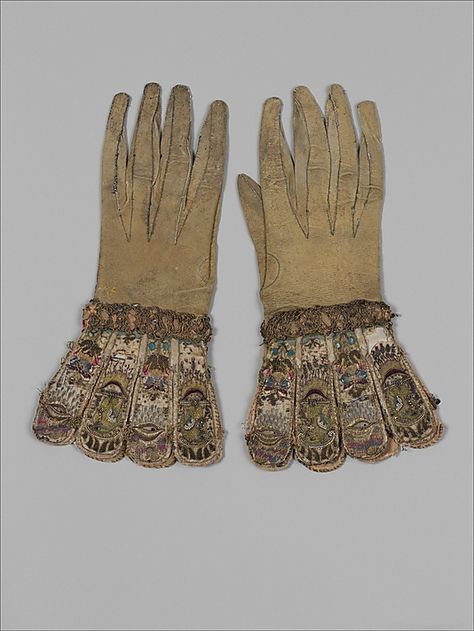
I washed and pressed the piece of linen then put it into the closest thing I had to a period stretcher, as I would be working on them at Much Ado About Sebastopol. The pattern was carefully drawn on with technical pens. Thus, I began, using Shading stitch (or long & short stitch) for 90% of the figures, plus occasional French Knots, Couching. and Chainstitch. The gold purl work was an exercise in disaster which was reworked several times thanks mostly to very tough and forgiving linen.
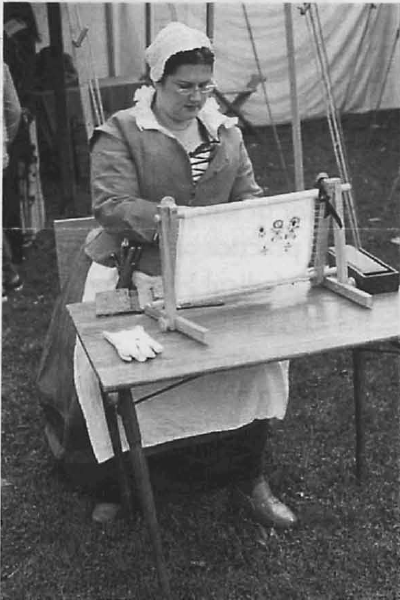
I used a pair of gardening gloves obtained at Mrs. Dalloway’s Bookstore on College Ave, Berkeley. Removing the thick gauntlets left remarkably useful perforations in the thick leather, making the attachment of the embroidered bits and ruffle much easier.
The embroidery was backed with canvas and interfacing – not paper as they were in period, but in a way that was more familiar to me. Once that was set, I cut out the work. Matching the size of the gauntlets perfectly with my salmon pink silk, I would soon realize that I should have oversized the silk lining and cut it back later. Simple and obvious, except when doing Stupid Human Tricks and rushing. The ruffle is a length of the same silk. made into a tube. And gathered. It should have lace on both edges, but I only just this month found a decent wire lace – and no, I’m not yet crazy enough to make my own. I did find a lovely gold lace that was acceptable and sure looks pretty. I chose not to cut out the tabs, concluding that this was a first-time project and anything I can do to assure the glove’s strength would payoff in the long run – the fewer cuts the better.
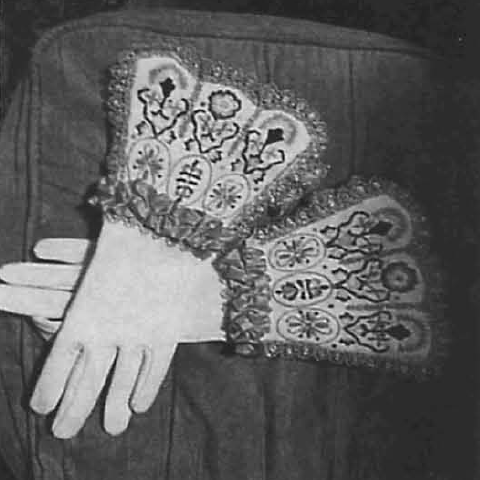
This is a great prop. It looks good. calls for oohs and ahhhs, and taught me a much about slowing down. not setting an end date for something like this. and sometimes being fearless at the risk of doing it wrong. I’m happy and excited about my next project.

Leave a comment